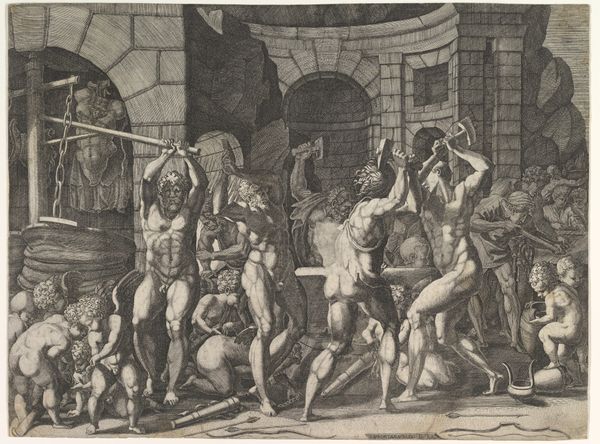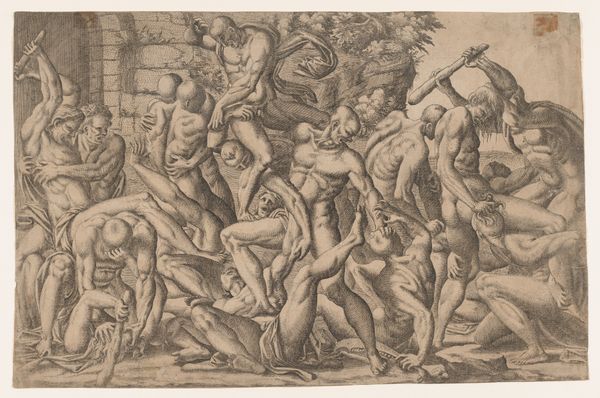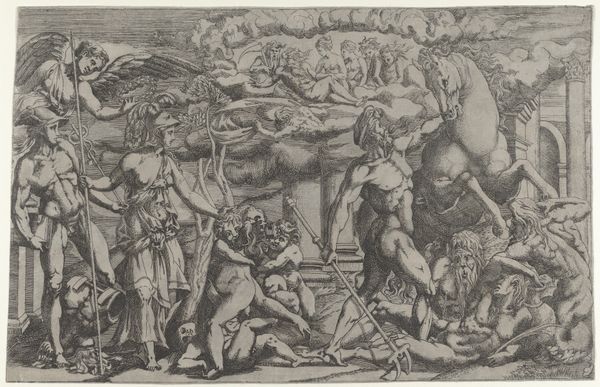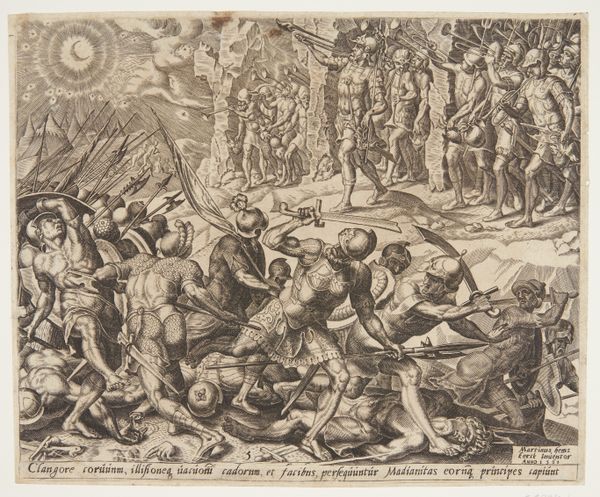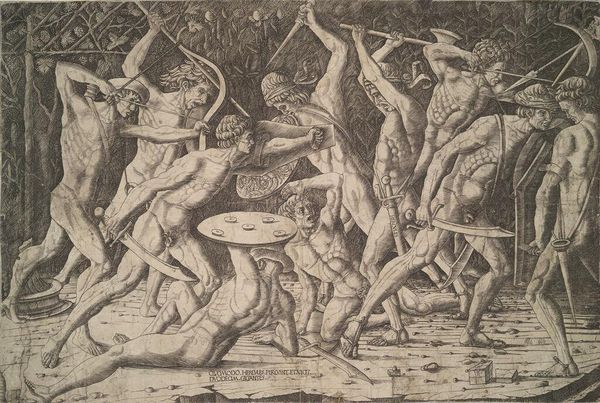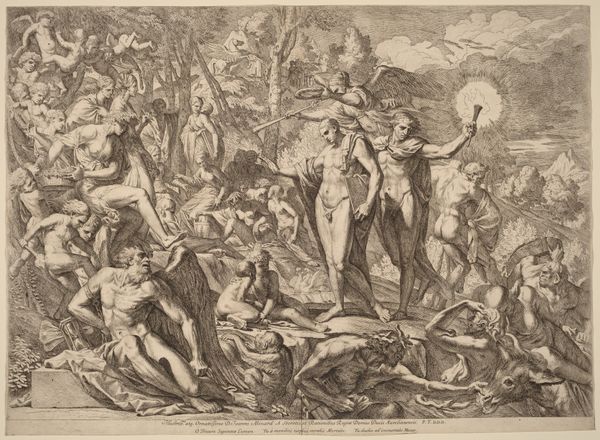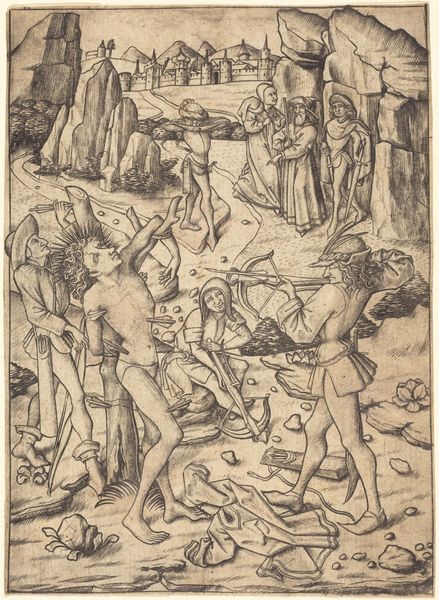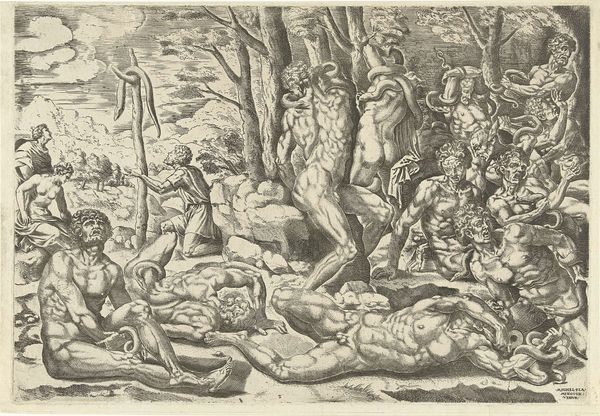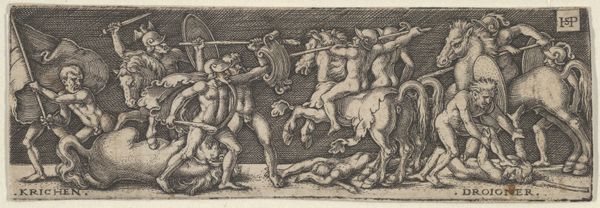
drawing, print
#
drawing
#
toned paper
#
ink drawing
#
ink painting
# print
#
pencil sketch
#
possibly oil pastel
#
fluid art
#
ink drawing experimentation
#
pen-ink sketch
#
watercolour illustration
#
sword
#
watercolor
Dimensions: sheet: 14 5/16 x 21 3/4 in. (36.4 x 55.2 cm)
Copyright: Public Domain
Editor: We’re looking at a 15th-century drawing titled "Battle of Hercules and the Giants," currently held at the Met. It's quite chaotic; there's a lot of implied movement. I wonder, how do you interpret the social function of such a violent scene, especially in the context of its time? Curator: Well, that’s a key question. Remember that in the 15th century, powerful families often used classical imagery to legitimize their rule and showcase their strength. The Battle of Hercules and the Giants, a popular subject at the time, isn't just about violence; it's about the triumph of order over chaos, a potent message for those in power and those they wished to impress. Editor: So it's less about historical accuracy and more about… political messaging? Curator: Precisely. Think about who would commission and view this work. Powerful patrons likely saw themselves mirrored in Hercules, the virtuous hero, defending civilization against barbarism, represented by the Giants. The very act of owning such an image conferred status and validated their position. Editor: That's interesting. I guess I had assumed a simpler, purely decorative function. Were there any specific social events where a print like this might have been displayed or circulated? Curator: Definitely. Consider festive occasions, weddings, or even political gatherings. Prints allowed for wider distribution than paintings or sculptures. Owning a version, even a reproduction, contributed to a network of cultural capital, signaling an affiliation with classical virtues. Think about the location – was this designed to be seen in the household, or put into circulation? Editor: I hadn't considered how widely distributed prints were even back then. I’m beginning to see how even something as seemingly simple as this drawing played a role in reinforcing societal hierarchies. Curator: It's a potent example of how art isn’t created in a vacuum, and it allows us to consider power structures of the past. I hadn’t fully considered where this print was meant to be seen, initially, and that shifts my reading of the imagery!
Comments
No comments
Be the first to comment and join the conversation on the ultimate creative platform.

